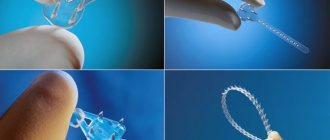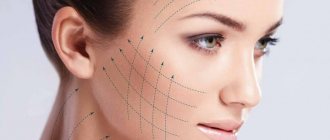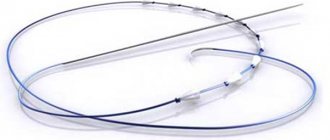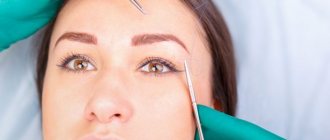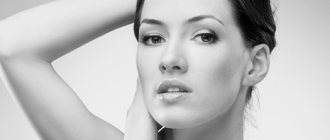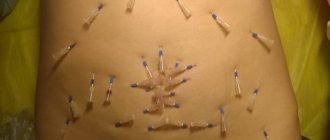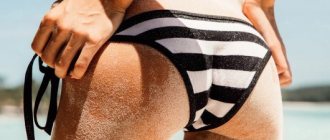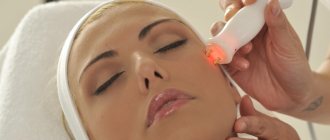Modern cosmetology offers many different techniques for rejuvenating and maintaining the beauty of the skin at any age. A special place among such manipulations is occupied by thread lifting - a popular and widely advertised method of rejuvenation. According to descriptions from beauty clinics, the procedure can be a full-fledged replacement for plastic surgery, while it does not take much time and does not require long-term rehabilitation, that is, the usual rhythm of life will not be disrupted. A couple of weeks after the lifting, a woman’s appearance noticeably changes, as evidenced by photographs from the “before and after” series.
All this sounds attractive and tempting, however, before making an appointment with a cosmetologist, it would be useful to read reviews of women who have already done such a lift. After all, despite all the positive aspects, this procedure has its own subtleties and features that need to be known and taken into account. This will help you better prepare for the procedure and avoid possible negative consequences.
What is thread lifting?
Thread lifting is a non-surgical rejuvenation technique that has been known in many countries for more than 15 years. To better imagine what thread lifting is, you should familiarize yourself with the essence of this method. During the procedure, special threads are inserted under the skin, which can be either absorbable or non-absorbable. Over time, a frame consisting of collagen and elastin fibers begins to form at the site of insertion of the threads, which serves as a natural “corset” against age-related ptosis.
Why is this thread lifting better than fillers, biorevitalization, mesotherapy or plastic surgery? He is a kind of intermediate link. It is advisable to perform it when the effect of fillers is insufficient, and the operation causes fear or is impossible for medical reasons.
What types of mesothreads are there for face lifting?
The composition of all types of threads is the same. They consist of polydiaxonone, which is used in surgery to stitch tissues and gradually dissolves, and polylactic acid, which coats the threads on the outside and moisturizes the deep layers of the skin.
For face lifting in modern cosmetology, different mesothreads are used. They differ in thickness, length and structure.
| What types of mesothreads exist for face lifting? | Length | Areas of use | Advantages | Flaws |
| Linear (monofilament) | 2-9 cm | Complete lifting of the skin of the neck and face, correction of wrinkles around the eyes, lips, forehead, chin lifting. | Easy and painless administration, invisible in areas with thin skin. | It may be necessary to introduce 20-30 threads on each half of the face. |
| Spiral | 5-6 cm | Nasolabial folds, drooping eyebrows, double chin, tightening of the skin in the décolleté area. | They preserve lively facial expressions and have an effect equivalent to the injection of botulinum toxin. | Often, tubercles and hematomas form at the injection site. |
| Needle mesothreads with notches | 6-9 cm | Versatility (for any wrinkles). | There are special notches along the entire length, with the help of which the skin is firmly fixed in a taut state. Used for enhanced skin lifting. Long-lasting effect (minimum time about 7-8 months). | There must be high-quality anesthesia, as the procedure is painful. |
All of the above mesothreads are 3D mesothreads. The following items are certified in Russia:
- Lead Fine Lift (South Korea);
- Beaute`Lift V Line (Japan).
Indications and contraindications
Like any cosmetic procedure, thread face lifting has its own list of indications and contraindications. Indications for performing the procedure are:
- pronounced wrinkles;
- the presence of pronounced nasolabial folds;
- ptosis of soft tissues in the chin and cheekbones;
- noticeable drooping of the corners of the eyebrows.
In order for the operation to be successful and not lead to unpleasant consequences, you need to remember the contraindications and refuse lifting in the following cases:
- viral and infectious diseases;
- pregnancy and lactation;
- in the presence of disturbances in the process of blood clotting;
- presence of inflammation on the face (acne);
- presence of cancer;
- diabetes;
- allergic reactions to anesthesia and thread components;
- the presence of significant sagging of soft tissues;
- being overweight;
- age over 60 years.
Also, during a consultation with a cosmetologist, it is better to tell about previously performed beauty manipulations, so that the doctor has a complete understanding of the patient’s health and skin condition.
Optimal age for surgery
This manipulation is recommended to be carried out between the ages of 30 and 50 years. At a younger age, you can get by with beauty injections based on hyaluronic acid. After 50 years, as a rule, the effect of threads may not be enough, since at this age the prolapse of soft tissues is usually pronounced and more drastic measures are needed. Therefore, many cosmetologists recommend this procedure for women under the age of 40, when visible and stable results can be achieved.
Important! The age limits given are recommended, but you should always keep in mind individual characteristics. Therefore, if thoughts about thread lifting come to mind with enviable consistency, you can consult with a cosmetologist about the advisability of such manipulation.
Where and who performs the procedures - how to choose a clinic?
The first thing you need to pay attention to when choosing a clinic is a license for medical activities . If there is one, then we move on to choosing a cosmetologist, who must have a higher medical education and a certificate stating that the doctor has undergone special training in working with the threads that are used in this clinic.
If you are interested in the thread lift procedure, we recommend that you learn about the cost and effectiveness of a neck and chest lift, as well as the undesirable consequences of a face lift.
Tips for choosing a clinic
The gold thread lift service is offered by aesthetic surgery clinics and plastic cosmetology centers. The highest level of facelift services is in Western European countries (Switzerland, France, Spain).
Asian cosmetologists offer the same services much cheaper, but many clients have doubts about the quality of the threads used during the procedure.
The clinic for the procedure must meet the following criteria:
- Availability of a license for medical activities.
- Doctors must have qualifications confirmed by certificates.
- The area of a good clinic cannot be less than 400 square meters. meters.
- Availability of modern equipment and high-quality consumables is mandatory.
- Transparent pricing policy.
- 24/7 availability of medical staff.
- Correct preparation of documentation with the preparation of a contract for the provision of services.
Golden threads are an effective and minimally invasive procedure that allows you to prolong youth . However, the result of the tightening will largely depend on the characteristics of metabolic processes and the condition of the patient’s tissues.
Side effects
After surgery, in some cases, side effects may develop. These include:
- the presence of bruises, swelling and the occurrence of hematomas. Swelling and bruising are the most common side effects. However, do not be scared or upset, this reaction is the body’s response to surgical intervention. If you follow all the doctor’s recommendations, the swelling subsides after 3 to 5 days, bruises may last a little longer, up to 1 week;
- the occurrence of asymmetry of facial features. The person's face is not perfectly proportional, while the threads are inserted under the skin at the same level. Therefore, during the rehabilitation process, slight distortion of facial features may occur;
- thread break. It is considered the most difficult side effect, as it leaves a scar due to a deep cut in the skin;
- According to numerous reviews on the Internet, the face can be very painful in the first days after a thread lift. The only way out of the situation may be to take painkillers.
To reduce possible side effects to a minimum, it is better to entrust your face to an experienced doctor about whom a large amount of information and real positive reviews have been collected and who has extensive practical experience in this type of operation.
Preparation
During the consultation, the doctor collects information about the patient’s health status. At this stage, it is possible to identify contraindications. The medical history includes data on the presence of allergies, dermatological diseases, and operations performed. The plastic surgeon assesses the condition of the patient’s skin, determines the correction zones and the type of materials.
Preparatory stage:
- for 2 weeks, taking medications and dietary supplements is excluded;
- within 7 days before the scheduled procedure, alcoholic beverages, tobacco products, sunbathing, and peeling are prohibited;
- For 3 days it is important to limit the consumption of coffee and energy drinks.
Pros and cons of thread lifting
Like any cosmetic procedure, thread lifting has its pros and cons, which are best familiarized with in advance. The benefits of lifting include:
- the facial contour will become clearer and tighter;
- the quality of the skin will improve, it will become more elastic and dense to the touch;
- the so-called “jowls” and “double chin” will disappear;
- facial skin will smooth out, small wrinkles will disappear;
- the overall appearance will become fresher and more youthful;
- the effect will last for several years.
But do not forget about the possible disadvantages:
- the procedure itself is quite painful, and sometimes pain can be felt even when using local anesthesia;
- depending on the threads used, a full operation under general anesthesia may be required;
- Some types of threads dissolve over time, so the lifting effect will not be very long-lasting. In this case, you can perform another procedure later.
Before deciding to undergo a thread lift, it is very important to weigh all the advantages and disadvantages of this procedure to make a final decision.
Advantages and effectiveness of the product
Cog cosmetic threads are the most effective method for tightening the contours of the face and body, and creating relief shapes. Allows for minimally invasive intervention, ensuring minimal trauma to the integument. The implantation sites heal within a few days, leaving no scars or scars. Unlike linear mesothreads, Koga implantation is accompanied by painful sensations and requires the use of anesthetic cream. The result can be assessed immediately upon completion of the session; over time, the effect will increase due to the activation of collagen and elastin synthesis.
Advantages:
- pronounced lifting is achieved in 1 procedure;
- the result lasts from 3 to 5 years;
- allows you to achieve harmony of facial features;
- low morbidity;
- short recovery period;
- can be used in a complex of rejuvenating procedures;
- reinforcement areas - face and body.
Dissolution of the material occurs within 12-18 months. After the result decreases, you can perform re-implantation, which allows you to prolong the thread lifting effect. To maintain the tightening, fillers, meso-cocktails, and hardware cosmetology are used.
Types of threads
There are a large number of types of threads, but they are all divided according to their properties into 2 groups: absorbable and non-absorbable. Also, various materials are used in the production of threads: threads can be synthetic (they contain nylon or propylene), biopolymer (based on bioplastic) or metal (they contain platinum or gold). The threads also vary in shape. They can be smooth, jagged, spiral or cone-shaped.
What type of threads to use depends on the patient’s age and overall skin tone. For example, before the age of 40, absorbable sutures are usually used. After 50 years, non-dissolving threads with barbs are usually used. They are more difficult to install and the risk of side effects is higher, but the effect of their use is the most long-lasting.
Below we will discuss the main types of threads that are used for thread lifting.
Aptos
Aptos serif threads are a special type. There are small serrations along their entire surface that help hold the thread in certain places under the skin. Such threads are inserted under the skin to a depth of 5 mm, and a microscopic puncture is performed. Threads can be either soluble based on polylactic acid (the effect lasts up to 2 years) or insoluble based on polypropylene. The effect can last more than 4 years.
After surgery, rehabilitation can last up to 2 weeks, and for a month you should try to restrain active facial expressions.
Mesothreads
Among all types of threads, mesothreads are the thinnest, and the method of their introduction is the least traumatic. In this case, the doctor is required to have high professionalism and precision, since incorrectly installed threads can lead to skin constrictions and distortion of facial features.
In terms of duration of action, they are the most rapidly soluble, the effect lasts about six months. Such threads are not suitable in case of significant age-related changes; the effect of their use in this case will be minimal.
Cone threads
On the surface of such threads there are cones and knots that help fix the thread in problem areas. The base of the thread is made of insoluble polypropylene, the knots and cones are made of soluble materials such as glycolide and lactic acid copolymer. Over time, they dissolve, and collagen capsules are formed instead, which help tighten the oval of the face. This type of thread is used to correct the shape of the face and tighten the skin.
Recovery after surgery lasts about 2 weeks, then you should refrain from active facial expressions for a month. This type of lift is well suited for women under the age of 50 and in the absence of severe ptosis. Otherwise, the procedure will be ineffective.
Important! For optimal results, threads should always be selected based on the condition of the skin and the age of the patient. Then the effect of application will be most pronounced.
Features of Korean Cog mesothreads
What makes Cog unique is its needle-like structure, which can be used for both excess and deficiency of skin flap. The system consists of a guide thread, a cannula, and a body with spikes. They have different configurations, it is possible to choose the optimal look for a specific area of the face or body. As a result of the low-traumatic procedure, natural reduction of the skin flap occurs and the harmony of proportions is maintained.
Features of kogi threads:
- have biodegradation properties - over time, the material disintegrates and is removed from the body without consequences;
- hypoallergenicity and biocompatibility with tissues reduce the risks of side effects and inflammation;
- provide a comprehensive result, in addition to tightening the contours, collagen and elastin are synthesized, elasticity and skin density are restored;
- during implantation, it can be combined with linear mesothreads;
- repeated reinforcement prolongs the result of the previous procedure by significantly reducing the amount of material;
- the high cost is due to the result being comparable to surgery, but short rehabilitation and minimal risk of complications are the main advantages of the technique.
How is the operation performed?
Since the procedure can be quite painful, the desired area of skin is first numbed with icecaine or ultracaine. After this, using a special needle, the thread is inserted under the skin through punctures or micro-incisions. The procedure itself takes no more than half an hour.
Immediately after thread lifting, skin tension may be felt, as well as pain at the puncture sites. Painkillers are prescribed to relieve pain.
You can learn how thread lifting is performed from the video:
Patient reviews
A forum dedicated to cosmetology services allows you to evaluate the real results of thread lifting. Mostly there are positive reviews confirming the effectiveness of the technique.
A forum participant describes her impressions. A pronounced rejuvenation effect, tightened, well-groomed skin are undoubted advantages. But it is also worth mentioning the rehabilitation process, which is accompanied by some discomfort.
The girl describes the features of the recovery period. The inconveniences are associated with the need to sleep on a high pillow and problems with articulation. It is difficult to assess the effect until rehabilitation is completed; the face looks unnatural.
In her review, the girl writes about the pain of implantation and confirms its effectiveness for tightening the oval. During rehabilitation, swelling was observed, and a bumpy appearance appeared on the cheek.
Many still doubt it, fearing pain and side effects. There is a problem of choosing a specialist and material for thread lifting.
Rehabilitation period
As a rule, patient recovery after thread lifting lasts about 2 weeks, in rare cases it can take 1 month. During this period, a woman should especially carefully follow the following recommendations:
- refuse to visit the bathhouse and sauna;
- It is prohibited to use peelings and facial scrubs;
- you need to touch your face with your hands as little as possible;
- massage should be excluded during rehabilitation;
- reduce the use of cosmetics to a minimum;
- stop drinking alcohol so that connective tissue is formed correctly;
- puncture sites should be treated with Miramistin at least 3 times a day.
By adhering to these simple rules, the rehabilitation period will pass quickly enough and will not entail the development of any complications.
Safety measures after the procedure
Thread facelift is a rather complex procedure that requires the patient to follow certain measures and recommendations after introducing metal and synthetic threads under the skin. The recovery period can last from 1-3 days to 3 weeks (depending on the type of threads), and during this time the patient must follow the precautions given below.
- Several times a day you should treat your facial skin with antiseptic agents. This must be done in the form of compresses (moisten a cotton swab with the solution and carefully apply to the puncture site for several minutes). If necessary, the doctor may prescribe prophylactic antibiotics and antimicrobials.
- For 14 days after a thread lift, it is prohibited to carry out any manipulations with the face (touching with hands, vigorously rubbing, patting, etc.). During this time you can only sleep on your back.
- For 7-10 days you should refrain from playing sports, visiting the pool, as well as any thermal procedures.
- All food must be at room temperature for 1-2 weeks: eating hot foods and drinks is prohibited.
- Mimic activity must also be limited for at least 5-7 days after the procedure. Ignoring this recommendation may result in the threads breaking.
During the week after the procedure, you should limit facial activity and touch your face as little as possible.
Patients should not use the usual facial care products (peelings, scrubs, gommages), massage, visit a solarium or do any cosmetic procedures during the entire rehabilitation period.
Important! If a facelift was performed using threads made of precious metals, it is necessary to warn the specialist about this every time you visit a cosmetology office, since many procedures are contraindicated for such patients.
Intimate lift
With the help of thread lifting, not only a face lift is performed, but also an intimate vaginal tightening. This procedure is carried out by gynecologists in gynecological departments of clinics. Indications for surgery are:
- prevention of prolapse of the vaginal walls;
- decreased satisfaction with sex life;
- the presence of perineal deformities after childbirth and injuries.
The advantages of intimate lifting are obvious:
- lasts about an hour;
- performed on an outpatient basis;
- no long-term rehabilitation required;
- allows you to quickly return to a full sexual life;
- the effect is long-lasting.
After thread lifting, the vagina narrows, and sexual life becomes better. And most importantly, you can immediately return to everyday life without long rehabilitation and hospitals.
Composition and structure
3D threads DarVin (Darwin) for face lift are produced by Italian. They are made of polycaprolactone fibers. This is an innovative material created using Matrinet technology.
The presence of the polymer in the skin promotes restructuring and revitalization of the dermis, creating optimal conditions for the formation and growth of new fibers.
Darwin mesothreads have a complex structure, in the form of a triple plexus. In professional circles they are also called caprolactone 3D structure.
3D threads are transparent and smooth, and come in several sizes: 30, 50, 70 mm. They are embedded in a thin needle made of high-strength medical alloy, which does not deform due to the resistance of the fibers during puncture. Thread thickness: 0.07 mm (6/0 USP). The sterile blister contains 5 threads.
Alternative Methods
If thread lifting is scary or impossible, but you really want to have smooth, tightened skin, then you can try other anti-aging techniques. Fillers are often presented as an alternative to thread lifting, but this is not entirely correct. Fillers have a shorter duration of action than threads and are not suitable for long-term correction of imperfections. For severe ptosis, they are also not particularly effective.
That is, there is no direct alternative to thread lifting. You can try to achieve a similar effect with injections, but the result may not be as pronounced.
Mesothreads. Complications and negative consequences
If the operation was performed by an experienced cosmetologist who acted correctly, there will be no negative consequences. But due to the fact that the human body is unique, consequences may appear.
The most common cases are the appearance of small hematomas and abrasions in the puncture area. In case of pain in the places where mesothreads are inserted, you should consult a cosmetologist so that he can prescribe an anesthetic ointment.
More severe consequences can be caused by incorrectly introduced mesothread. Subsequently, it can be visible through the skin. In this situation, you need to contact the cosmetologist who performed the operation.
The most unpleasant consequence of the operation can be infection. To avoid this, it is necessary to perform the operation only in a trusted clinic with a qualified specialist.
Many women planning to undergo surgery want to buy mesothreads first. This is not recommended, as you may purchase low-quality material.
Photos before and after
In the photographs below you can see in detail the effect of threads in women with various age-related changes.
You should always remember that the effect of threads cannot be the same in all patients. The effectiveness of a lift depends on many factors, such as age, the general condition of the soft tissues, the ability to regenerate and, last but not least, the qualifications of the cosmetologist and the quality of the threads themselves.
See more details: thread face lifting - before and after photos.
Where is it made in Moscow and how much does it cost?
The price of a facelift with DarVin 3D threads consists of the number of threads installed, the cost of additional services for anesthesia, cleansing and disinfection of the integument. The cost of one DarVin 3D thread varies between 1100–1500 rubles.
The overall cost of thread lifting is also influenced by the class, rating of the clinic (cosmetology center), and the level of qualifications and professionalism of the staff. In Moscow, you can perform a face lift using innovative threads at the expert clinic of aesthetic medicine "Triera", the beauty clinic LS CLINIC.
Facial care after lifting
In the first 3-4 days you should not wash your face, you can only wipe the skin with antiseptic solutions. After 4-5 days, when the swelling decreases, you can wash your face with warm water, while drying the skin carefully with a soft cloth.
On day 4-5 you can already go outside. However, it is advisable to wear a wide-brimmed hat, which will protect damaged skin from the negative effects of the sun's rays.
After a thread lift, for the first 2-3 weeks, only ointments prescribed by a cosmetologist can be applied to the face. Decorative cosmetics are prohibited, as their use can lead to infection and overstretching of the skin.
Stages of the procedure
Thread lifting begins with a consultation with a specialist. The doctor will assess the condition of the skin, the degree of age-related changes, recommend threads, explain in detail the course of the procedure, features of the preparation and recovery period.
Reinforcement of the face with biothreads should only be entrusted to those cosmetologists or plastic surgeons who explain in detail all the nuances of the technique, its pros and cons, and do not hide the fact that the face will require a fairly long recovery after the session.
Thread selection
The material for lifting is selected based on the patient’s age, the type and condition of the epidermis, and predisposition to allergic reactions. The correct choice of threads reduces the risk of unwanted reactions.
In beauty clinics they most often use:
- Aptos. Thin smooth threads, the use of which gives a lifting effect for up to 5 years. They are easily placed under the skin and are well fixed due to special notches. Not suitable for patients with thick and rough skin, as they are too thin and may not withstand excess pressure.
- Platinum and gold threads. Suitable for lifting not only the face, but also the décolleté, hips, and abdomen. Hypoallergenic material, therefore often used for lifting for allergy sufferers. After the introduction of platinum and gold threads, hardware lifting is contraindicated in the future. Gold reinforcement is most often recommended to clients over 50 years of age, although it is being done less and less these days.
- 3D mesothreads. They consist of materials biocompatible with the tissues of a living organism. 9 months after implantation, the mesothreads begin to dissolve, but the lactic acid released from the threads continues to compact the muscle frame and stimulate the production of collagen fibers. The tightening effect lasts for at least 4 years.
Preparatory stage
At the initial consultation, you must tell the cosmetologist what medications you are taking. 7-10 days before the procedure, you will need to stop using all kinds of dietary supplements, vitamins, antibiotics, and blood thinning medications.
If you need medications for life reasons, then your doctor should know that you are taking them.
The risk of hematomas after lifting is higher if, on the eve of the procedure, the patient drinks painkillers and drugs based on acetylsalicylic acid.
For women, thread lifting is not recommended during menstruation.
For patients with chronic herpes infection, it is advisable to take a course of antiviral drugs in advance, since rashes often appear on the lips after the procedure.
Lifting sequence
The lift is performed in stages:
- The face is thoroughly cleansed of cosmetics, dust, and impurities. A cap is put on the head.
- Anesthesia is performed - a thread lift is performed under local anesthesia.
- The skin is wiped with antiseptics.
- The doctor makes markings on the selected correction zones.
- The selected threads are introduced. The different configurations of the fibers allow them to be placed along horizontal and vertical lines, or at an angle.
- The injection sites are inspected, and the remains of materials that have come to the surface of the dermis are removed.
- The skin is wiped with an antiseptic, the puncture sites are covered with a sterile bandage, and a pressure bandage is fixed on top.
A thread lift takes no more than one hour. The patient can go home immediately after the procedure.
Recovery period
The duration of rehabilitation depends on the type of threads and compliance with all recommendations suggested by the doctor. But on average, recovery usually takes 2-3 weeks.
Patients tolerate the introduction of mesothreads and reinforced fibers more easily, without any particular discomfort or complications. Rehabilitation takes longer after the introduction of lifting options under the skin, that is, those threads that should hold weakened skin with pronounced age-related changes.
After the procedure, slight bleeding of the puncture sites, tingling in the places where the threads are attached, skin unevenness, and swelling are possible. All these symptoms are considered a normal tissue response to manipulation.
After healing, the effect of thread lifting increases over 4-5 months and in particularly successful cases lasts up to 7-8 years.
Possible complications
Swelling, small hematomas, impaired facial expressions, loss of sensitivity, hypercorrection are considered normal reactions that disappear within 10-14 days.
However, after thread lifting, complications that are difficult to eliminate are possible, such as:
- Severe swelling and hematomas that persist for more than 10 days. The reasons for their appearance must be determined by a doctor, after which appropriate therapy is selected.
- Allergic reactions. They are manifested by increasing swelling, itching, and redness of the skin in the places where the threads lie. If an allergy occurs, the threads must be removed, as material rejection and tissue necrosis are possible.
- Infection. Increasing pain, redness of the skin, and increased temperature indicate infection. In most cases, a course of antibiotic therapy helps to cope with the infection.
- Persistent disturbance of facial expressions. Indicates compression or damage to nerve fibers. To solve the problem, the doctor must remove some of the material that is in contact with the nerve.
- Uneven facial relief in the form of pits and bumps. The reason is the displacement of the threads, which occurs as a result of non-compliance with recommendations in the first few days after the procedure.
If disturbing symptoms and changes in well-being appear, it is advisable to consult the cosmetologist who performed the lifting as soon as possible. In most cases, the problem can be solved with non-surgical techniques.
Frequent mistakes and failures of thread lifting. Why do they happen
When deciding to carry out such procedures, what you should first pay attention to:
- Unsanitary conditions : poor sterility of equipment and instruments, carrying out a lifting operation in a room not intended for such work is simply unacceptable.
- Insufficient qualification of a specialist can lead to the operation being carried out with violations of the insertion technique, excessive tension of the thread, which can cause stretch marks, folds or bunching of the skin.
- Lack of asepsis and antisepsis before and during the lifting procedure, which leads to infection of soft tissues and the formation of inflammation.
- Patient predisposition : an experienced and qualified cosmetologist is required to collect a detailed medical history,, if necessary, request the results of some tests and give good advice.
Blindly pursuing a goal just to achieve the result of rejuvenation at any cost is the main mistake.
Only by arming yourself with detailed information and going through all the necessary preoperative steps can you minimize the risk of an unsuccessful outcome.
Read the popular article in the section about the product: Black facial skin cleansing mask: how to make a black mask at home. Recipe, application, reviews.
Aptos threads - negative reviews
Domestic cosmetologists and plastic surgeons have been using the Aptos thread lift method for skin rejuvenation for about 20 years. Despite the large number of reviews from grateful clients, quite often you can find cautious or even angry comments from people who are dissatisfied with the result of the operation or suffer from complications. What is this connected with?
One of the most important risk factors is the wrong choice of clinic and doctor.
The authors of the Aptos method, Georgy Marlenovich Sulamanidze and Marlen Andreevich, conduct training and issue certificates only to dermatologists who have a higher education document. Therefore, when contacting a clinic, you need to make sure not only of the doctor’s competence, but also that he has a certificate that allows him to perform thread bioreinforcement or skin tightening with Aptos threads.
Mastery of cannulas (blunt-pointed needles made of high-quality surgical steel to which Aptos threads are attached) does not guarantee highly qualified medical care. Sometimes girls complain that they are bothered by significant swelling after surgery with a bluish tint.
Others notice
- facial asymmetry,
- surface roughness,
- hematomas
- or even subcutaneous inflammation
– this is not a complete list of troubles associated with the doctor’s unprofessionalism. In girls with very thin, fair skin, the threads themselves may be noticeable.
Another important factor in the appearance of negative reviews about Aptos threads is the low quality of unregistered samples of suture material, which does not have an official certificate from Roszdravnadzor.
It must be remembered that unscrupulous doctors can save on threads made in Asia.
The third factor in the occurrence of various side effects can be considered the individual characteristics of individual patients. If the doctor is not informed about the presence of allergies, the reactions of which he can prevent by prescribing antihistamines, as well as a number of other diseases, then the consequences of even a low-traumatic surgical intervention can be complicated.
However, you shouldn’t be afraid of all the possible side effects, you just need to take into account 3 factors:
- the solidity of the clinic and the experience of the doctor,
- high quality Aptos threads,
- exclude contraindications, and also notify the doctor about diseases and medications taken (if any).
Back to the beginning of the article
